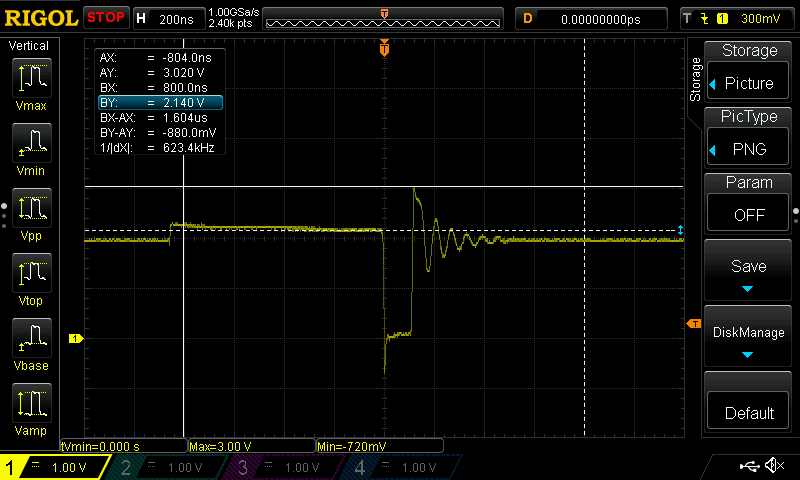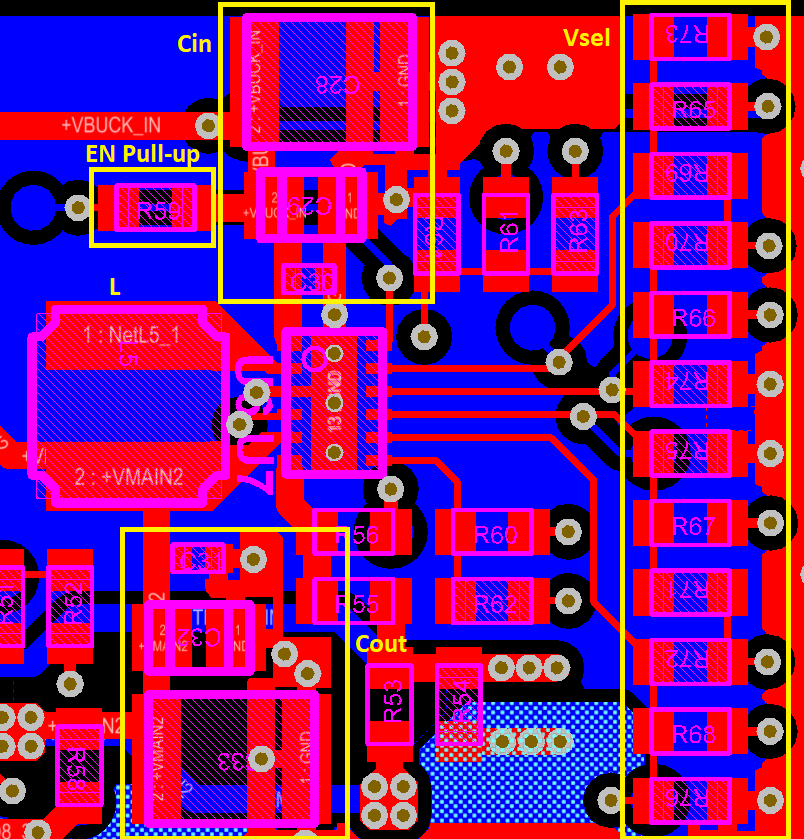Hello,
I'm measuring the voltage on SW node of the TPS62740 and I see these behaviour:
The absolute maximum ratings are:
-0.3V (in this case in more!!!) and Vin+0.3V (in this case more: Vin+880mV)
This behaviour is related to a not good compensation, usually. But i cannot act on the feedback loop (inside the chip).
Can you help me in this analysis, please?
Thank you and kind regards
Alessandro




